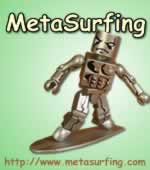A pixel that uses a pair of mirrors to block or transmit light could lead to displays that are faster, brighter, and more power efficient than liquid crystal displays (LCDs). Researchers at Microsoft Research who published their novel pixel design in Nature Photonics say that their design is also simpler and easier to fabricate, which should make it cheaper.
LCDs corner half of the global TV market and are the most popular technology for cell phones and flat-panel computer monitors. But for three reasons, they do not boast the best image quality. First, the pixels do not turn completely off. Second, it takes 25 to 40 milliseconds on average for the pixels to switch between black and white, which is slow enough to blur fast-moving images. Third, LCDs are almost impossible to use in bright ambient light. "There is nothing in LCD technology that stands out," says Sriram Peruvemba, vice president of marketing at electronic-paper pioneer E Ink, based in Cambridge, MA. "The only reason it has done well is it's the lowest price [flat-panel] display today."
The new telescopic pixels switch completely off and on within 1.5 milliseconds. Michael Sinclair at Microsoft Research says that the ultrafast response time translates to simpler, low-cost color displays. In LCDs, a pixel is made of three subpixels--red, green, and blue--that are lit up simultaneously at different intensities to create, say, yellow. Each subpixel is controlled with a separate transistor circuit, which makes the circuits complex. Because the telescopic display switches so rapidly, you could put red, green, and blue light-emitting diodes behind each pixel, Sinclair says, and have them sequentially light up to create a color shade. "This would reduce the complexity and cost of today's LCD," he says.
More.

No comments:
Post a Comment